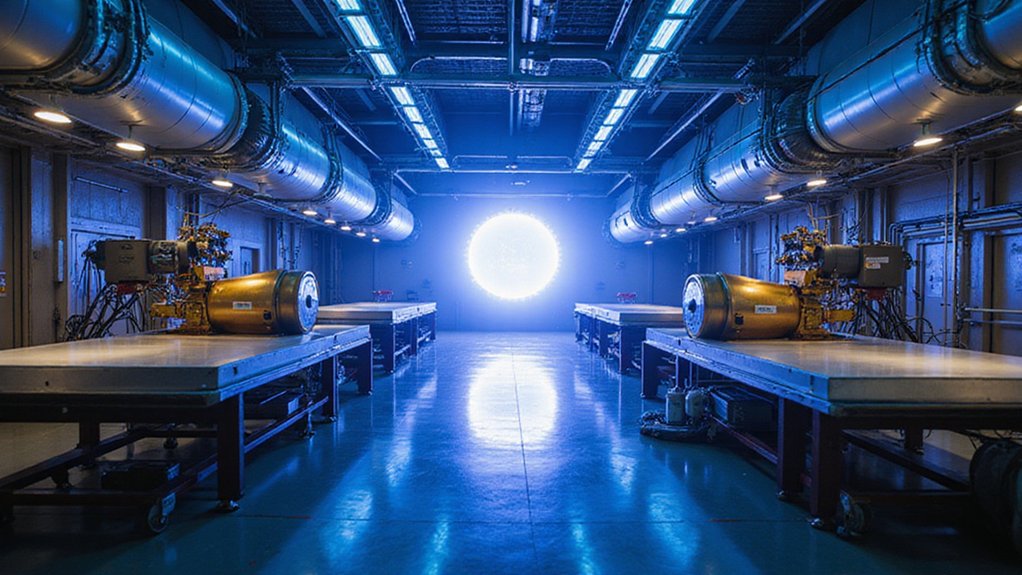Power unimaginable to most humans has been released at the University of Michigan. The ZEUS laser facility achieved a record-breaking 2 petawatts of power during its inaugural experiment. That’s 2 quadrillion watts, more than 100 times the entire world’s electrical output, though only for a tiny fraction of a second.
ZEUS, which stands for Zettawatt-Equivalent Ultrashort pulse laser System, was commissioned in October 2023 as a National Science Foundation funded user facility. It’s now the most powerful laser ever built in the United States, far exceeding previous university systems that peaked at just 300 terawatts.
The ZEUS laser system represents a quantum leap in American high-energy physics, dwarfing earlier university facilities by nearly 7-fold.
The laser works by firing an ultra-short pulse lasting only 25 femtoseconds (that’s 25 quintillionths of a second) into a helium-filled chamber. This strips electrons from atoms and forms plasma. The setup allows electrons to accelerate behind the laser pulse through a process called wakefield acceleration.
What makes ZEUS special isn’t just its raw power. Scientists plan to create even more extreme conditions by having high-speed electrons collide with laser pulses traveling in the opposite direction. This multiplies energies dramatically, creating zettawatt-equivalent power in the electron’s frame of reference.
The gymnasium-sized facility will enable research into quantum electrodynamics, relativistic plasmas, and may reveal secrets about fusion energy and fundamental physics. Scientists will study exotic phenomena like electron-positron pair production and vacuum polarization that are normally only found in extreme cosmic environments.
The facility is open to researchers worldwide through a merit-based peer reviewed proposal system. This positions Michigan as a global hub for high-field laser research for at least the next decade. The total construction of ZEUS cost approximately 16 million dollars to build, making it a cost-effective alternative to larger particle accelerators.
ZEUS still hasn’t reached its full potential. Its design capacity is 3 petawatts, with further expansions planned. The extensive facility is housed within 16,000 square feet of space including specialized cleanrooms and shielded laboratories. As scientists push these boundaries, they’re creating laboratory conditions that mimic some of the most extreme environments in the universe, revealing new frontiers in understanding fundamental physics and developing future technologies.
References
- https://zeus.engin.umich.edu/about/
- https://www.popsci.com/science/united-states-most-powerful-laser-zeus/
- https://thedebrief.org/worlds-most-powerful-laser-zeus-equips-u-s-with-beam-surpassing-100x-global-electric-power-output/
- https://optics.org/news/13/9/39
- https://cosmosmagazine.com/science/physics/zeus-a-mighty-laser-fires-into-the-future/




